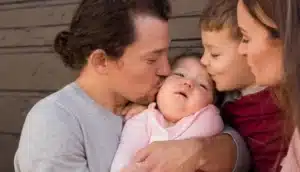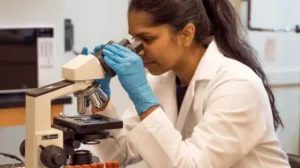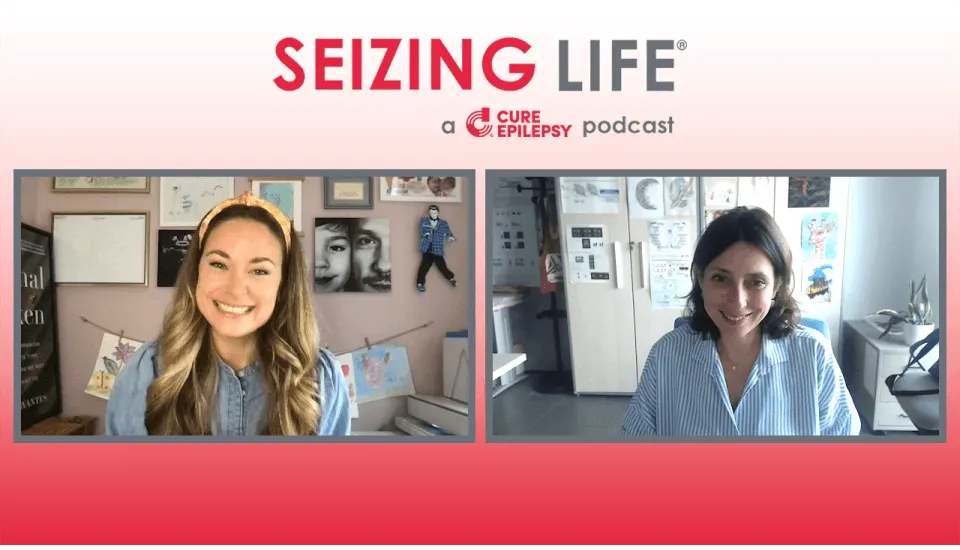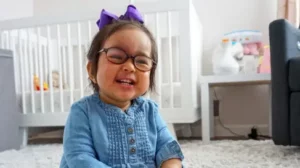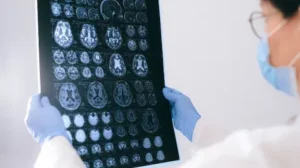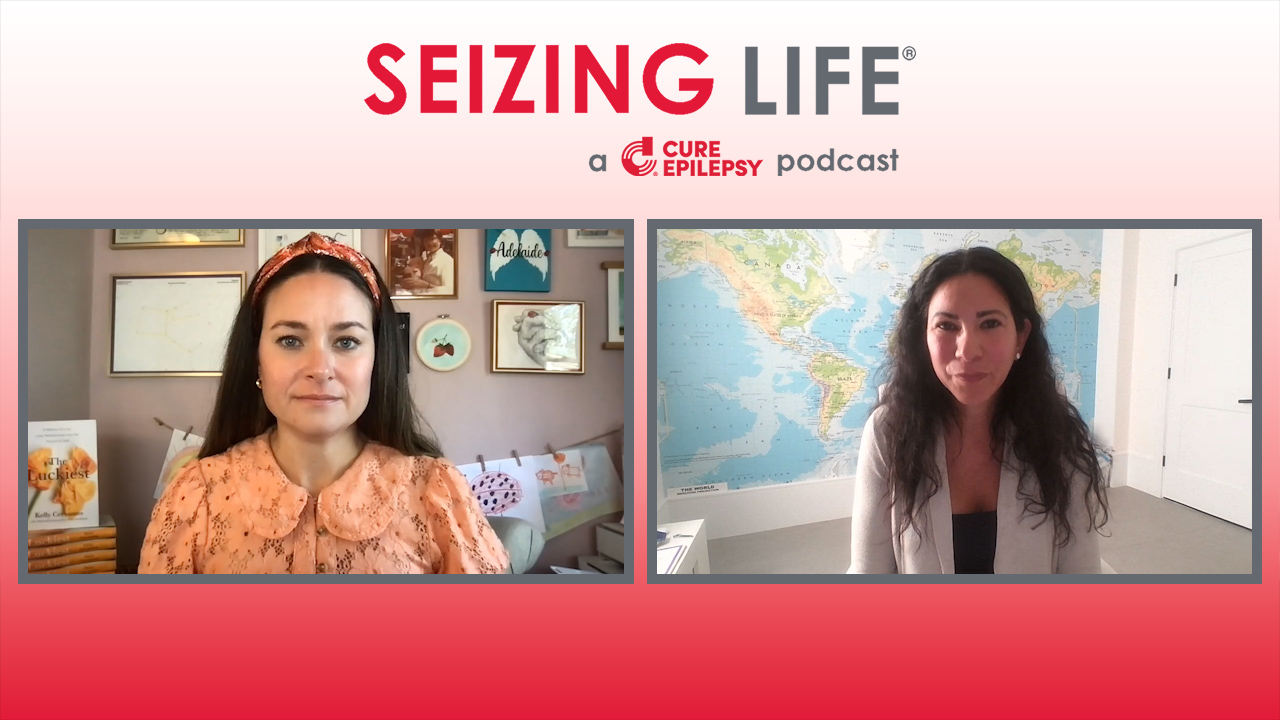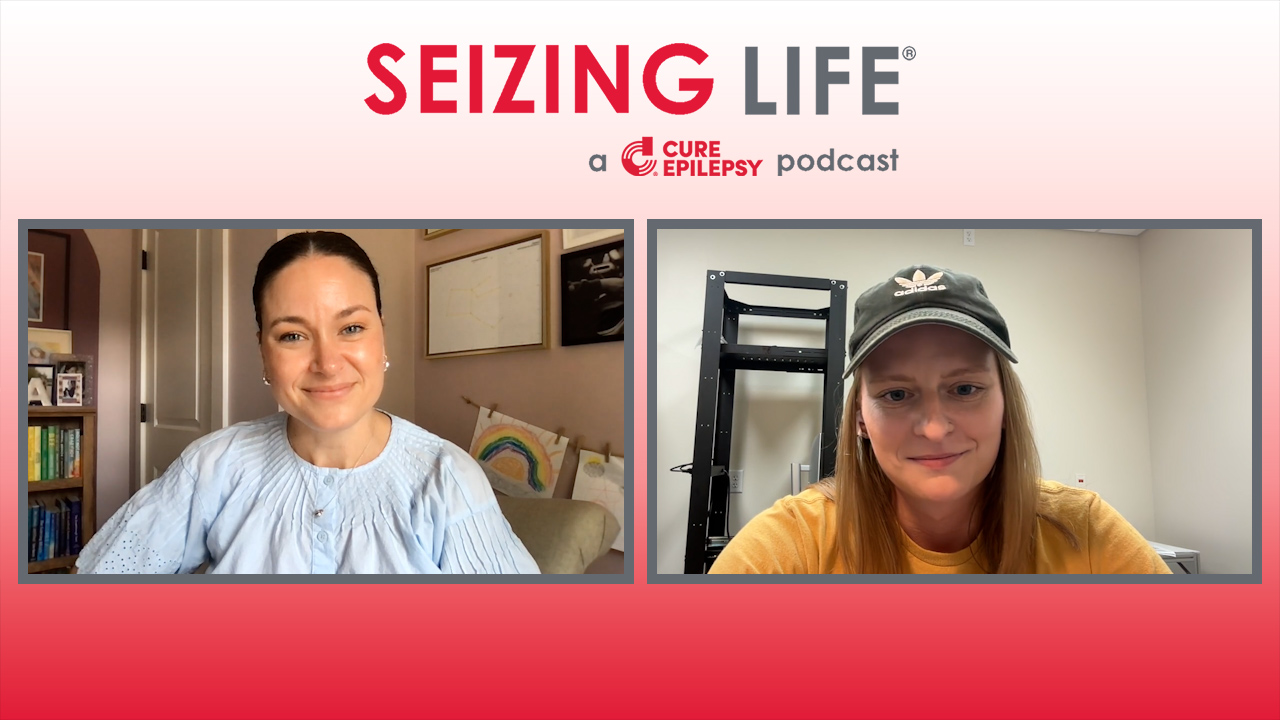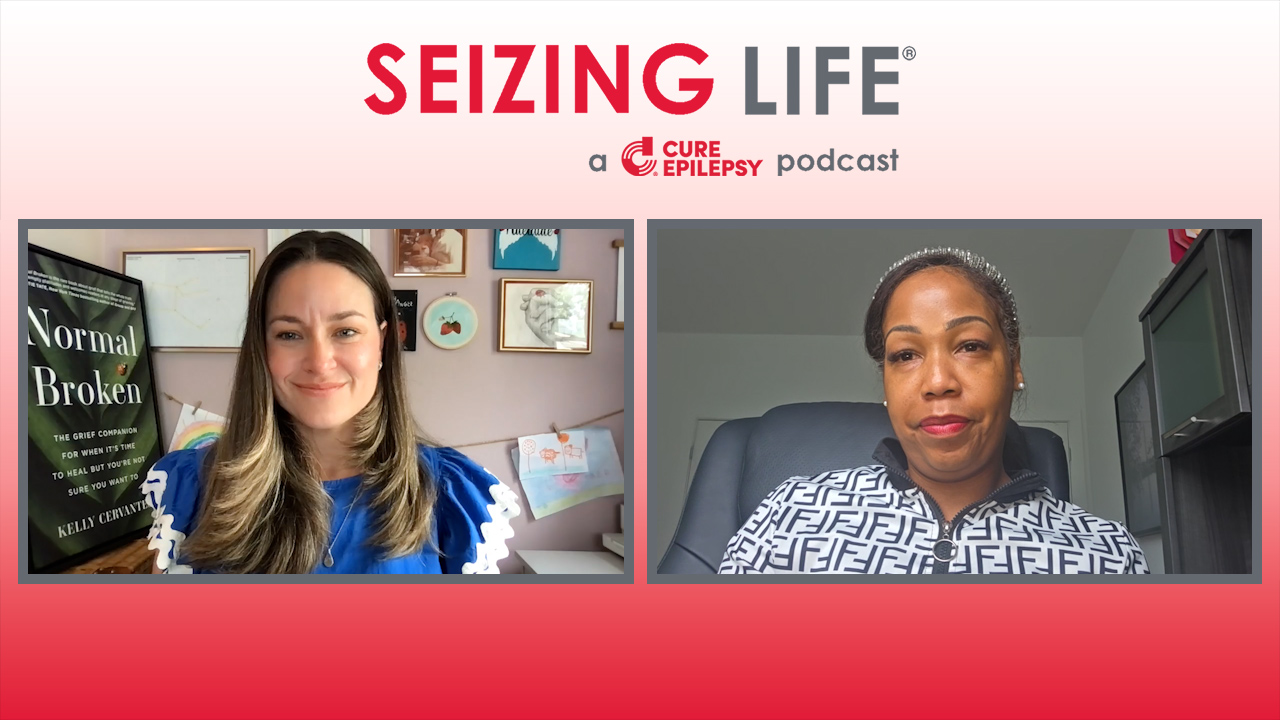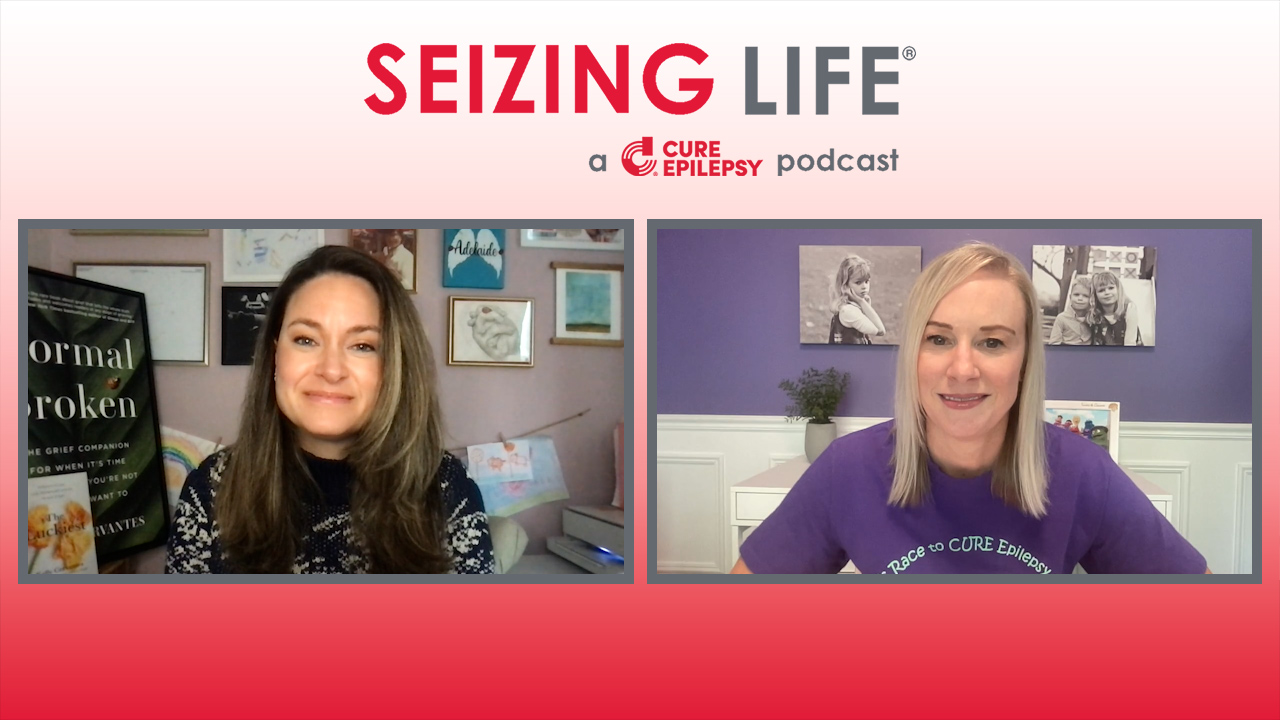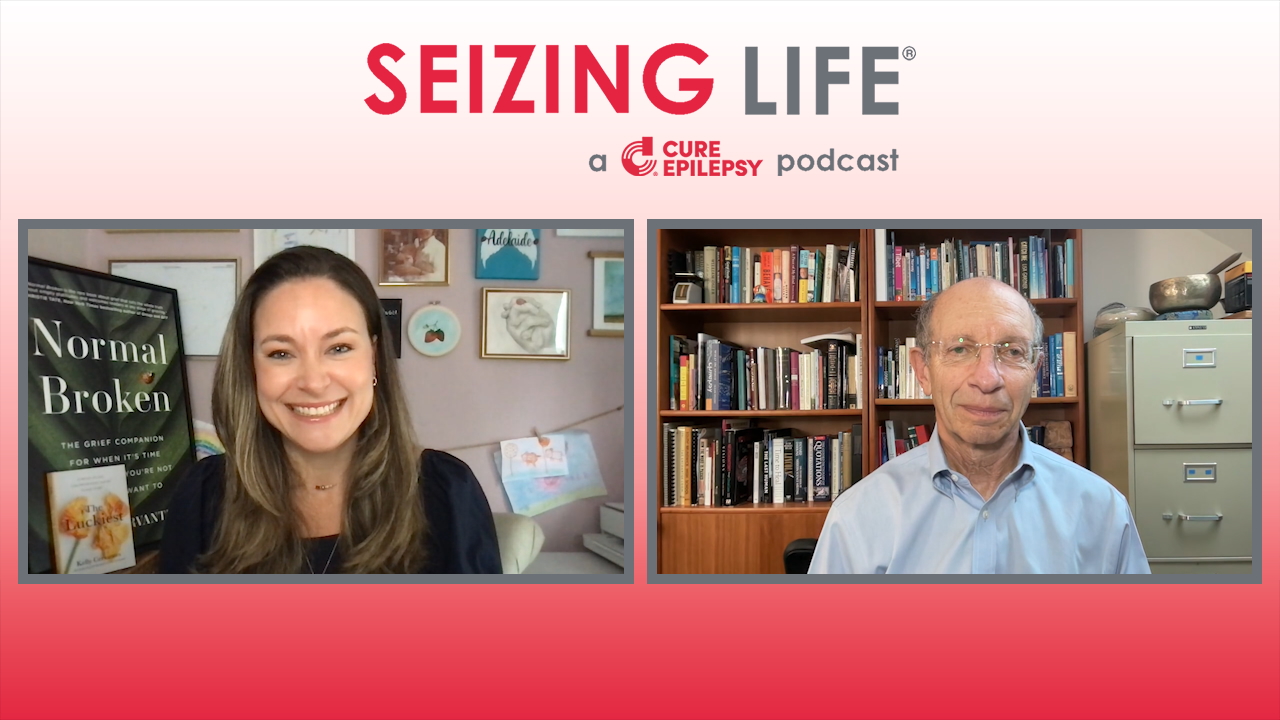Turning the Tragedy of SUDEP into Hope: The Story of the Joanna Sophia Foundation
Episode Overview
SUDEP, or sudden unexpected death in epilepsy, is a rare but devastating outcome that can occur in epilepsy. Despite efforts to raise awareness of SUDEP, too many people and families impacted by epilepsy are not made aware of the risk of SUDEP and what can be done to minimize those risks. Wednesday, October 15th is SUDEP Action Day, a day to to raise awareness, share knowledge, and promote ways that those impacted by epilepsy can reduce the risk of SUDEP. In honor of SUDEP Action Day, we speak with Maria Teresa Ioannou who tragically lost her nine-year-old daughter Joanna Sophia to SUDEP in 2018.
Joanna Sophia Ioannou was diagnosed with epilepsy at nine months old and was prescribed Keppra to control her seizures. Following a period of seizure freedom, Joanna was weaned off the Keppra and remained seizure-free for four years. However, the seizures returned as Joanna approached puberty and she was put back on Keppra at age nine. Despite being well-controlled, Joanna experienced some nighttime seizures, which put her at an increased risk for SUDEP. However, Joanna’s parents had never heard of SUDEP. Only after Joanna’s tragic and shocking passing in November 2018 did her parents learn about SUDEP. As the family mourned and struggled to understand what had happened to their daughter, they resolved to create something positive out of their painful loss. The result is the Joanna Sophia Foundation, an organization whose mission is to advance public awareness of epilepsy and the risk of SUDEP as well as help support families impacted by epilepsy.
Maria Teresa Ioannou shares her memories of Joanna and details her daugther’s epilepsy journey. She expresses her conflicting emotions around the subject of SUDEP disclosure, and explains how the Ioannou family decided to create the Joanna Sophia Foundation to honor their daughter’s memory. She also describes the amazing annual “Fun Run” that the foundation has organized in their Queens neighborhood and details how that has grown to include several international events aimed at raising epilepsy awareness, helping families impacted by epilepsy, and supporting epilepsy research.
Episode Transcript
Kelly Cervantes:
Hi, I’m Kelly Cervantes and this is Seizing Life, a monthly podcast produced by CURE Epilepsy.
The third Wednesday in October is designated as SUDEP Action Day. SUDEP stands for Sudden Unexpected Death in Epilepsy. It is a devastating outcome that can occur in epilepsy and an incredibly difficult topic for epilepsy patients, families, and doctors to discuss. My guest today, Maria Teresa Ioannou tragically lost her nine-year-old daughter Joanna Sophia to SUDEP in 2018. She and her husband founded the Joanna Sophia Foundation in her memory. The Foundation’s mission is to advance public awareness of epilepsy and the risk of SUDEP. Maria Teresa is here today to share Joanna’s story, raise SUDEP awareness, and share the aims and accomplishments of the Joanna Sophia Foundation, which include supporting epilepsy research.
Maria Teresa, thank you so much for joining us today. I’m so excited to be able to talk with you and to share your family with our Seizing Life family. To begin, tell us a little bit about yourself and your fabulous family.
Maria Teresa Ioannou:
Thank you, Kelly. Thank you so much for the invitation as well. I have four children, my husband and I. My husband’s from Cyprus. We’re Greek and Mexican, so we have a little bit of all over the place. And our four kids, one’s in college now. Andria’s a senior, she’ll be going to college. Then there’s, Raphael’s our little one and Joanna, who would’ve been 16 this year.
Kelly Cervantes:
They’re all growing up. I got to meet you years ago. It’s just wild to think of how grown everyone is and how fast time actually flies, that Joanna would be 16.
Joanna, as you mentioned, she sadly passed away. She had epilepsy, passed from SUDEP. But before we get into talking about her epilepsy journey, I want you to share Joanna Sophia with us and talk to us about her.
Maria Teresa Ioannou:
Well, she was my third daughter, so she always had to be the loudest to get any word around. I had three kids within three and a half years, so it was just complete and utter chaos in the house, which was lovely. I was able to handle it, but because she was number three and the baby, she just had to really shout for her own attention, but it made her so much lovable and friendly and always talking to everyone and she was always missed popularity in her class. She’s really missed by her classmates, she truly is.
Kelly Cervantes:
I can imagine. I can imagine that she is. And now share with us, if you can, a little bit about how epilepsy entered Joanna and your family’s life, because it does affect the entire family.
Maria Teresa Ioannou:
Well, she was… Like I said, I had three, so Isabella was three, Andria was one and Joanna was nine months old. Just regular, daily, crazy life in the morning where I was feeding the older two and getting ready to feed the baby, Joanna, at the time. And as I’m ready to feed her, she just kind of falls limp and I just took it as she’s falling asleep. So I went to go put her back in the playpen and then she woke up right away and then I said, “Okay, this is kind of weird, but all right, let me just get her regular cereal,” because she was finally going on cereal. And as I’m making it, that’s when she suddenly started to seize, what most people know it’s an epileptic seizure, the grand mal, is that what they called it? I forget the terminology a lot of times.
And obviously I got very nervous. I move away from the kitchen where the kids are so that they’re not seeing it. I call 911. My husband wasn’t home. He came running… Thankfully he was not far and he came right away, but by the time the EMT and my husband were home, the seizure was gone. So she was definitely out of it. She was falling asleep. But again, it’s a nine-month old, it’s not something that I can figure out. When a child is older, you could see it a little more. So the EMT is like, “We’re still going to take her to the hospital.” So we went. So we had all the proper diagnosis, that she had to do an MRI. The doctors told us, “We have to see how everything progresses. As of right now, she had one seizure, we don’t know anything after this.”
Then because she had another one, again, another craziness with going to the hospital and having all the diagnosis again, they didn’t seek anything in the brain. They weren’t sure why it was happening, but at that point I had to decide that she was going to be on medication because we needed to make sure she wasn’t going to get anymore. And to be honest, I had the book, I was writing all her seizures down. It was a lot. I looked back at that book sometimes and I’m like, “Wow.” I definitely know there’s people that unfortunately have so much more with their children, but for us it was a lot. It was definitely something became a significant part of our lives, having seizures for her, seeing her having seizures.
So they put her on Keppra and for the most part it was good, we raised it, every time she had a seizure, we would have to go and check. And because again, she was little, she was growing, we had to make sure everything was on track. But our family became accustomed to it, “Okay, this is just what life’s going to be and we’re going to have a child with epilepsy.” So I read up as much as I could, we were going to every doctor’s appointment and then around two years old, the doctor started to tell us, “She’s doing really well. She’s flourishing. She’s not having seizures. She hasn’t had one in a year and a half.” But her neurologist, after seeing her a couple times and noticing that there was no changes, we started talking about weaning her off, which was really wonderful news.
Kelly Cervantes:
It must have been such a relief to feel like maybe you had control of this and maybe just maybe it was behind you. So how long did that period of seizure freedom last?
Maria Teresa Ioannou:
Four years. Yeah, at eight years old, so four, no, maybe even more, six years about. It was great. And then all of a sudden she just had one after another at nighttime. She normally had her seizures at night and we heard her scream and it was just… You just know your kid, you hear the different scream. You know it’s not a, “Mommy, I need water,” scream. It’s definitely something that woke me up and ran.
And my kids, my older one, Isabella, she was already used to the whole setup, so she was like, “Mommy, she’s having a seizure.” We went through the whole process of going back to the hospital and then that’s when they had to put her back onto medications. They kept her again overnight to see what was the reason. And when we finally got to neurologist, the neurologist actually told us that it was probably prepubescent, that she was starting her changes so the likelihood of the seizures that will be coming again is normal. And of course my husband’s first question is, “Will she be able to wean off again?” But it was, I didn’t believe that that would be our future. I thought, “That’s it. We’re going to have our child with seizures,” and again, “We’ll make sure to be okay with it.”
Kelly Cervantes:
And did he put her back on the same medication?
Maria Teresa Ioannou:
Yes. We were back on Keppra. And with Keppra, most people know you have something called Keppra rage and the doctor also recommends taking a vitamin B6. So as part of her regimen was medication and vitamin B6, and to be honest, my husband and I, we really looked into that and we found a juice, it was called Naked Green Machine that really worked wonders. It gave her the B6 that she needed.
And we saw that when she was little, we were giving her that, and we actually saw a major result the day we were taking her home from the hospital because they had given her a massive dose of Keppra to control her seizures. So that was her huge Keppra rage that I have ever seen where she was hitting us and angry and just yelling. And my husband and I, we were taking her home and we stopped at a supermarket, pick up the drink, have her drink the bottle. It wasn’t that big, it was a small amount. And suddenly she was like, “Mommy, I love you. I’m so sorry. I love you.” And we just looked at each other and we’re like, “Wow, it really does work.”
Kelly Cervantes:
Wow, that’s amazing. And such useful information for other families. I’ve never heard that before. That’s incredible. So she gets back on Keppra. Did Keppra, was it controlling the seizures? Or she’s eight now, she’s having the seizures.
Maria Teresa Ioannou:
That was summer, so May 2018, she did have two more episodes over the summer. Again, both at night. One was with, she slept over at my sister-in-law’s house. So my sister-in-law called me in the morning. She said, “Everything’s fine, but she has a seizure,” she’s a nurse practitioner so I felt comfortable that I knew she would be okay. And then another one was, I unfortunately forgot to give her medication and maybe it was a coincidence, but the following day she did have the seizure and of course the neurologist said, “It’s okay, it happens. Just really try to be on top of making sure her medication’s on time.” But that’s one of those things where the neurologist, yes, they made it sure that we have to make sure we’re giving the medication, but they didn’t explain the real repercussions of, God forbid, we don’t give the medication.
Kelly Cervantes:
Right. Right. And then sadly, on November 6th of 2018, Joanna Sophia passed away. What would you like us to know about that day? And feel free to share as much or as little as you feel comfortable.
Maria Teresa Ioannou:
The most important is the, we just didn’t know why, that was the scariest part. Because I woke up, I was supposed to go to a PTA… I didn’t go to work that day, I was supposed to go to a PTA meeting, so I checked in on them. It was a day off, it was election day, so my niece was also sleeping over. It was one of those, “Let’s sleep late.” And they went to bed. And I didn’t want to wake them up too early and I saw her sleeping and my niece was awake and I just said, “Let her sleep, honey.” And she’s like, “No problem.” And it’s a bunk bed, so my niece and my daughter were on the bottom and my older daughter was on top.
So when I went to the meeting, I got a call from my oldest daughter and she was 13, so I had a babysitter at the house and she was on the phone as well, and she goes, “Please, come home.” She didn’t speak English, she was Greek, “Please come home, it looks serious.” So I just, in my mind it was she had a seizure. That’s all I could think of. I called 911. I’m having everybody… The normal thing of what we do, I called my mom to come and make sure the kids were taken.
And when I got home, I got there before the EMT. I saw her stiff, and again, I’m a dentist. I haven’t seen death. I just didn’t believe it. I didn’t even fathom. I just thought he was seizing and just stiff. So when the EMT arrived, they thank goodness took me out of the room and I went down to see my children and I’m sitting with them. I’m like, “Everything’s going to be okay.” When the EMTs came down, I looked at them and I go, “Is everything okay?” They took Joanna with them. They thankfully told me, “She’s unresponsive.” So at least I didn’t break down at that moment and my children were safe and still thought everything was fine.
So when I arrived at the hospital, that’s when obviously we realized that she was gone and we were trying to pick up the pieces, like what exactly happened? We had no idea. I realized that she had a seizure because there was urine on the bed. So sometimes that would happen when she’d have a seizure. So I brought that up to the doctors. And my husband was very nervous because the night before, he’s a swim coach, so he had the girls swimming for an hour, he practices with them and the whole team, he thought it was dry drowning, which occurs when you drink too much water while you’re swimming. So he got so nervous that it had something to do with that. It was a couple of days till we finally confirmed that it was SUDEP and it was told to us by the neurologist.
Kelly Cervantes:
I’m so sorry, losing a child really freaking sucks.
Maria Teresa Ioannou:
It does.
Kelly Cervantes:
And I hate that anyone has to experience that and be a part of this extraordinarily crappy club that we are both members of. You get the confirmation that it is SUDEP from the neurologist. Did you know anything about SUDEP? What is he telling you? How was it explained to you? That must’ve been a shock.
Maria Teresa Ioannou:
Yeah, it was. Honestly, the explanation was, it was terrible. It was. Basically was told, one in a thousand a year can die from SUDEP. And I’m like, “Listen, sorry, you didn’t tell us any… I had no idea.” So, he actually, unfortunately, and it’s not his fault, he was away. He was on some conference in Spain, so it was very… I didn’t get a chance to see him over, it was just through the phone. It was very painful because my pediatrician was unaware of it, and she had just seen her a month before. So when she came to the wake, she was in complete shock. She couldn’t believe it. She goes, “What…” For her, it was like she was a completely healthy child. She only had epilepsy. I know there’s a lot of children out there that have so many other issues and epilepsy is one of them. For our daughter, that was it. So to me it was like, “What the heck? How did this happen?’ We weren’t prepared in any way.
Legal Disclaimer:
Sudden Unexpected Death in Epilepsy, or SUDEP,` occurs when a person with epilepsy dies for no known reason. It’s estimated that SUDEP takes the lives of over 3,000 people living with epilepsy each year. CURE Epilepsy is committed to unraveling the mysteries of SUDEP. Our work has helped establish respiratory arrest as a leading cause of SUDEP among many other important findings. Learn more at cureepilepsy.org. Now, back to Seizing Life.
Kelly Cervantes:
We both know now that nighttime seizures make a person that much more high risk for SUDEP, and we also know from surveys that families want to know this information. When do you wish you would’ve been told about SUDEP?
Maria Teresa Ioannou:
It’s so hard because I do wish I knew, but I also have to admit that if I knew I wouldn’t have allowed Joanna to do as much as she did in her life. I may have prevented a lot of her going to sleepovers, her going to camp, her doing things with her friends that, because I would be too nervous to allow. But you know what? In the end, it’s having that loss and not knowing it was the worst. It’s the worst feeling in the world because I didn’t know how she died. I go, “What the heck did I do? Did I do something wrong?” My husband for days thought that he did something wrong.
So it sucks because I can’t give a proper answer, but I think it is up to us, we should know. I always said it with epilepsy, someone who has asthma, someone who is treated for another condition, they’re given so much more information than I feel epilepsy was for us. They just told me, “Take this medicine, make sure she doesn’t have another seizure.” That’s pretty much it. I really don’t remember getting any more information except what I knew, which was, “Oh my gosh, God forbid she has a seizure in public. Oh my gosh, the stigma.” That was the most important thing that I came out of when I heard epilepsy, and my daughter will never be able to drive.
Kelly Cervantes:
Right. It’s less about all of these, make sure you’re getting enough sleep, make sure you’re taking the medicine at the right time, stay away from alcohol, all of the things that you learn later on. Instead, all of the focus really does end up being on the stigma and the social piece of it. You’re totally, totally right. I know that you had another daughter who was also diagnosed with epilepsy, which I can only imagine the fear that came along with that. Can you share with us about that? And also, I have to wonder if you got genetic testing done and what those results looked like?
Maria Teresa Ioannou:
Well, we did. It actually happened that Andria had a seizure months before Joanna’s seizure at eight years old. So of course we went through genetic testing because I had told them that Joanna had seizures. She was seizure free, but she did have seizures. And they looked, they said to us, “It happens.” Our neurologist told us, the same neurologist, “And she gave you a little scare, hopefully that’s all it is.” And we moved on. We didn’t put her on any medication.
After Joanna passed, unfortunately, that summer, she ended up having, my second daughter ended up having another seizure. We were actually away when that all happened, so I definitely believe it had to do with jet lag. She was getting back to sleep, and again, she had it in her sleep. And when we got back, we got her tested and again, did a whole other genetic testing because now we actually had from the ME, more information from Joanna, so we were trying to find obviously a certain cause. Like, “What happened? Is that what’s happening to my other daughter?” And also to confirm that my other two children were okay, that they wouldn’t have anything. Obviously my sister, my sister-in-law, they all wanted to know because they wanted to make sure should they be looking for that in their children. But there was no actual genetic reason that could be linked to familial. It was just they found some small genetic mutation in Joanna that could be linked to seizures, but nothing more than that.
Kelly Cervantes:
It had to be very, very frustrating to not have a why and to not have those reasons. How is Andria doing today?
Maria Teresa Ioannou:
She’s actually great. So that last seizure that she had while we were away was the summer we lost Joanna, so she was placed on Trileptal. Thankfully, she’s seven years that hasn’t had a seizure. And six months ago, finally, after my neurologist suggesting many, many times to wean her off, I finally weaned her off. It really was more me. It had nothing to do with the doctor. My daughter kept wanting to get off, but it was very hard for me.
Kelly Cervantes:
Yeah, I mean, for obvious reasons. I don’t think anyone would’ve fault you that. I know that you have this incredibly supportive, tight-knit Greek community that you live in, and I have gotten to see it firsthand and it is so heartwarming and so uplifting. Tell us about how that community’s support helped you create the Joanna Sophia Foundation?
Maria Teresa Ioannou:
Yeah. Well, honestly, it was insane how supportive everyone was. I mean, they were there at the hospital when we found out we lost Joanna, there was so many people in the waiting room, I couldn’t believe it. And then obviously the wait. But even throughout the whole week, there were people at my house staying over. It was very strange because it was not something I was used to. And my brother-in-law compared it to the Jewish Shiva, where they-
Kelly Cervantes:
Mm hmm.
Maria Teresa Ioannou:
Yeah, they stay with you. And he goes… “We had that every single day.” And when that weaned off my son, he was four at the time. I remember he was like, “What happened to the party? There’s no more parties.”
Kelly Cervantes:
Ooww.
Maria Teresa Ioannou:
So anyway, every… Kids see it much, much different. But my sister-in had started a GoFundMe right away, and it was the first time I had heard about GoFundMe and it actually went insane. It raised a hundred thousand dollars. It was just insane the amount of money that people were giving and family from all over and friends, and it was just such a connection. And to be honest, we looked at each other and we’re like, “We don’t need this. Thank God, our family we’re okay.” We were looking to see who to donate the money to.
And then my kids at the time, while we were having this week of grieving, my kids kept looking at us, looking to us to see how to react. And that was the hardest part, is trying to maintain a level of calmness and peacefulness in front of my children, and at the same time wanting to break down. And that I think was the most important part for us, for our children to make sure that they don’t see mommy and daddy break down.
And that’s when my husband said to us, “This sucks. This sucks. Losing a child sucks. So losing your sister sucks. But we have to look at the good, at the positive. I want us to do something about this. Let’s raise, this money that we have, let’s raise it for good. Let’s have other people understand what epilepsy is, not be afraid of it.” We decided to go ahead and do a fun run. We wanted to make something fun. And we decided to do this fun run, a 5K around our neighborhood, and it goes from our school church where she attended school and it goes to another church closer to our neighborhood in Whitestone. So it was a 5K, or three mile.
The idea came from Costa, my husband. It was this crazy idea of, he just saw in his mind pink, purples, balloons. He wanted this huge festival of fun, and he did it. He really managed to do it within six months of her death, that was in November, June 29th, we had our first fun run. We had 1,500 people. It was amazing the amount of people that showed up the first year. And we didn’t even know what we were doing for the most part, but we managed it.
It was so wonderful, the community, the police completely came aboard, and they helped us in every way to close off the streets. And we had our community of volunteers, and it wasn’t just Greeks, there was so many from everywhere. We decided to call the run Around the World in 5K. And we wanted to have music from all around the world, cultures, traditions from around the world, food. So you go to this run, and yes, it’s a 5K. You’re running, you’re walking, you’re enjoying the music around you. And when you arrive at the final area, there’s a festival of food and music and dancing. It’s just such a crazy event, honestly. Because I never in a million years thought it would get to this point.
Kelly Cervantes:
It is one of the most amazing fun runs that I have ever attended.
And I want people to understand that you live in Queens. This is in New York City. To shut down these streets and to pull this off is next level. This is not something in a park in the suburbs. You are running down New York City streets in Queens. And I love around the world feature of it because New York City is so cultural, and you do walk from one street to the next, and you’ll have five different international cuisine restaurants right next to each other and so incorporating that and incorporating all of these cultures, it makes so much sense given where you are.
But also that, epilepsy affects everyone. It doesn’t care what your heritage is or what your skin color is or what language you speak or what food you eat, it affects all of us. And I do think that that is such a beautiful thing, a piece that you have sort of incorporated into this fun run, but really turning into a greater theme of the foundation as a whole. Tell us about, CURE Epilepsy has been a beneficiary of the Joanna Sophia Foundation funds, and we are so appreciative. Tell us how you found CURE Epilepsy and why you chose to donate to research.
Maria Teresa Ioannou:
I had reached out to first Daddy Did because I was trying to find out anything about SUDEP, and they were one of the first foundations that I found. So I remember speaking to Mr. Stanton, and he was wonderful. And he told me about his nephew, and I couldn’t believe it was so long ago that he passed away and still not knowing anything about it, about SUDEP.
So I remember speaking to him and telling him, “Unfortunately, someone famous has to die from SUDEP to bring any awareness.” And that summer, again, the year Joanne passed 2019, Cameron Boyce passed away. And through social media, I started to follow the mom and dad and I reached out in one of their social medias, and it was one of those where they just posted something. So when I posted right away to speak to them, they right away reached out to me. They put a message on IM and told me to reach out. I called, we spoke, and they’re the ones that actually introduced us to CURE Epilepsy. And CURE Epilepsy was just so wonderful, I couldn’t believe… I love the fact that it’s a platform for all these researchers to come to and they collaborate. More importantly, it’s collaboration because there is not going to be one research that’s going to finally figure out about epilepsy, it’s the multitude of research that one day will show what we can do about it. Yeah, yeah.
Kelly Cervantes:
Bringing all of these scientists together, it’s what we need more than anything, especially when it comes to the brain, which is so complex and we understand so little about it. So Maria, I understand that your children have also been involved in the advocacy efforts through their schools. Tell us how they’ve gotten involved.
Maria Teresa Ioannou:
Well, it’s been life changing, obviously. Things may not have happened if Joanna was still with us, but my oldest, Isabella got very into science and understanding the neurology part of it. And at this moment, she’s studying behavioral neuroscience in Fairfield, Connecticut. So that’s, her goal is, she’s not certain yet where she wants to go with this, but it’s so open right now to research, a PA, a nurse practitioner or going straight for the medical doctor, which it’s going to be a long one, but it’s just wonderful to me that she wants to be in the neurology field. That’s her dream.
So I know a lot of it that had to do with Joanna. She also was involved in raising money in high school. She’s the one, well, her and now my other daughter, Andria, they’re both participated in getting all the teenagers volunteering for the run because this run takes at least, there’s like a hundred volunteers just to do the inflatables that we have. And then it’s the T-shirts to be given out, and it’s all the food that needs to be presented. It honestly looks flawless when you’re there at the run, but it’s so many parts to it. And Isabella and Andria are both a big part of that, and it’s just nice. But again it’s, who knows what would’ve happened if Joanna was still with us. It definitely changes life.
Kelly Cervantes:
It absolutely does. I am a firm believer that, I don’t believe that things happen for a reason because I can’t come up with a reason to justify our children being gone, but I do believe that we can make reason out of the things that happen and that we can make good out of the things that happen. And I think that is what keeps me going so many days. And it really sounds like that is what keeps your kids going as well. Tell us about where the Joanna Sophia Foundation is going in the future. I know that… You have really taken this global. Talk to us about that.
Maria Teresa Ioannou:
Well, one of the first things that we did internationally was with Cameron Boyce Foundation, where my husband decided to climb to Kilimanjaro in Tanzania. And he’s crazy. He’s wonderfully crazy. I love him. And so we participated together with Cameron Boyce to raise money, between the two of us to raise money for our foundations. And in Tanzania, he saw a lot of, again, much different than what we think is poverty, poverty, there is just a different level. And he found a community of girls that at a certain age you are either going to go to high school or you’re going to be married, and that age is around 13, 14 years old, but they made a home for these girls. So my husband, what he did was, separate from the Joanna Sophia Foundation, he provides food, so he actually sends money to the supermarket, and they are the ones that come in and then they provide food for the shelter for all these girls.
So they’ve managed to have now about 5 to 600 girls in this shelter. And a lot of those girls were also placed there because they have epilepsy. So my husband’s next idea was, “Okay, this is great. Let them join with us in the run.” So they did a run a week before our run, our annual run, and it was so cute. They videotaped it, they showed it to us, and we presented it in the fun run at the end. It was just such a wonderful thing to see.
And from there, my husband, we decided, let’s do one… If we are doing it all the way in Tanzania, why can’t we do it somewhere closer to where we’re from? So we decided to do one in Cyprus where my husband’s from. He’s doing another run there, actually, November 6th of 2025, so it’s coming up. And yeah, so it’s again, huge participation. A lot of people that are really willing to do this because again, epilepsy does not know race does not know gender. It’s everywhere. So it’s just something wonderful to see.
And then we’ve also collaborated with a family friend of ours that became friends with us within the run. He is an Indian Sheik and he also, he wants to do this in India because again, that stigma of epilepsy. To be a child in a third world country where you already have poverty and other things that are against you, and now having the stigma of having seizures, so it’s something that just to bring more awareness. So he’s planning on doing his form of a run over there. So it’s just great. It’s absolutely amazing. I can’t believe Joanna’s name is all around me all the time, and people know of her and will know of her way longer. It’s beyond what I believed could happen.
Kelly Cervantes:
Well, Joanna Sophia is going to be remembered for decades and decades to come, and we, I know speak on behalf of everyone at CURE Epilepsy that we certainly wish Joanna Sophia was still with us and, or perhaps period, we are incredibly grateful for all of that your family has done for epilepsy, for awareness, for research. There is no question that your family has moved the needle, and we are all incredibly grateful to you. Thank you, Maria Teresa for sharing your story, for sharing Joanna Sophia with us and for continuing your mission to help raise awareness and money for research. Thank you so much.
Kelly Cervantes:
Thank you, Maria, for sharing your daughter’s story with us and for all that the Joanna Sophia Foundation is doing to raise SUDEP awareness, support research and help families living with epilepsy. This year, SUDEP Action Day is Wednesday, October 15th. If you are listening or watching this podcast, I hope you will take a moment to learn more about SUDEP or share your knowledge with others. CURE Epilepsy has been a leader in SUDEP research for 20 years, pushing the field to better understand risk factors that can lead to prevention. If you would like to support that work, please cureepilepsy.org/donate. Thank you.
Legal Disclaimer:
The opinions expressed in this podcast do not necessarily reflect the views of CURE Epilepsy. The information contained herein is provided for general information only and does not offer medical advice or recommendations. Individuals should not rely on this information as a substitute for consultations with qualified healthcare professionals who are familiar with individual medical conditions and needs. CURE Epilepsy strongly recommends that care and treatment decisions related to epilepsy and any other medical conditions be made in consultation with a patient’s physician or other qualified healthcare professionals who are familiar with the individual’s specific health situation.
